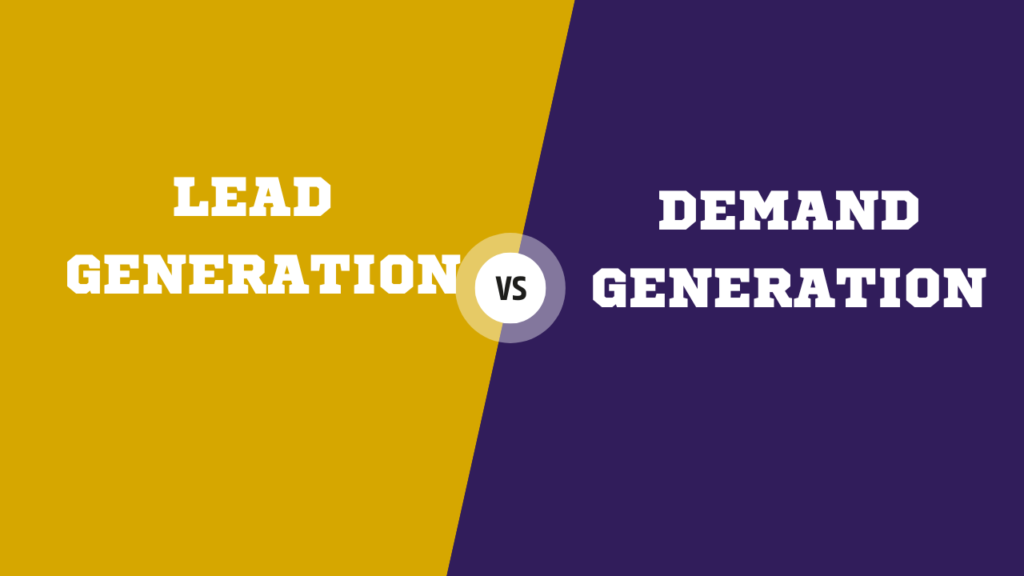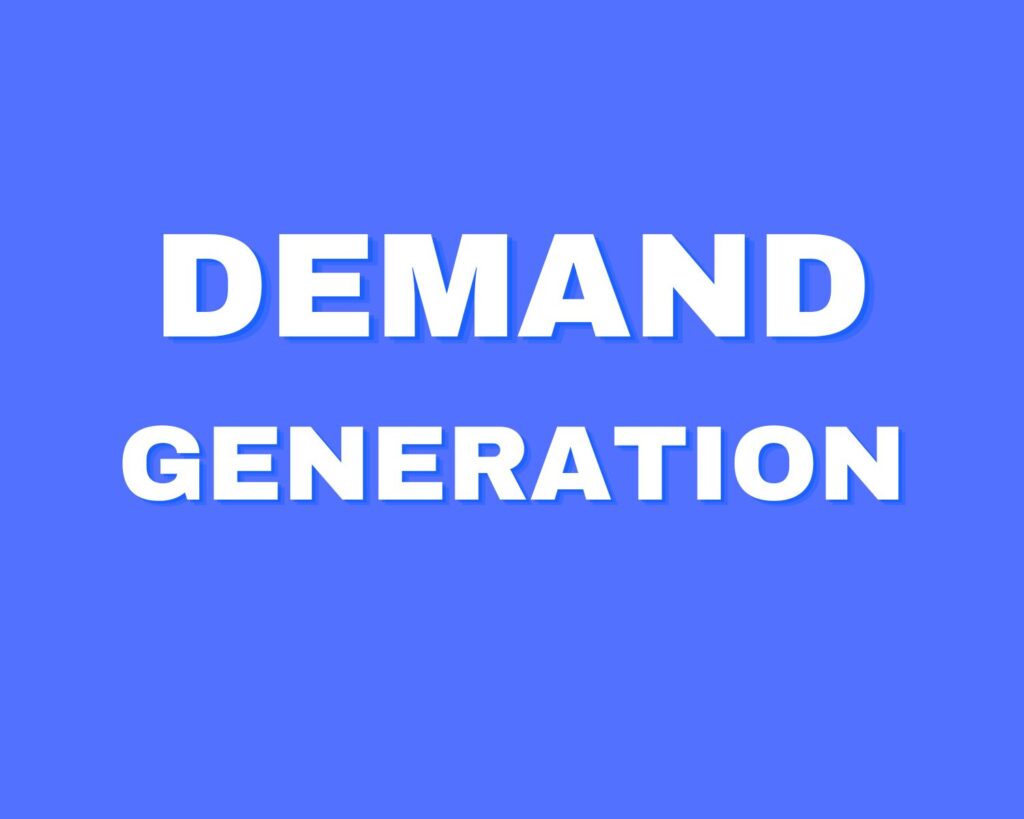In today’s competitive business landscape, demand generation plays a pivotal role in driving growth and success. It encompasses strategies and tactics aimed at creating awareness, generating interest, and nurturing leads to ultimately convert them into loyal customers. Implementing an effective demand-generation process requires a strategic approach and careful consideration of key elements. In this extensive guide, we will explore five essential elements to include in your demand generation process to maximize its effectiveness and achieve remarkable results
Clear Target Audience Identification
The first element in your demand generation process is identifying and understanding your target audience. Creating detailed buyer personas that represent your ideal customers is crucial. These personas help you dive deep into demographics, psychographics, pain points, and motivations. By understanding your audience’s needs and preferences, you can tailor your messaging and content to resonate with them effectively. This alignment creates more meaningful connections and drives higher engagement.
When defining your target audience, consider factors such as age, gender, location, job title, industry, and interests. Conduct surveys, interviews, and market research to gather valuable insights. By knowing your audience inside out, you can craft targeted marketing campaigns that effectively reach and resonate with them.
Compelling Content Creation
Content lies at the heart of any successful demand-generation process. Creating high-quality, informative, and engaging content that addresses your target audience’s pain points is essential. Your content should provide valuable solutions and establish your brand as a trusted source of information.
Consider the following content formats to diversify your strategy:
Blog Posts: Share industry insights, tips, and best practices.
Videos: Engage your audience with visually appealing and informative videos.
eBooks: Provide in-depth guides or resources that solve specific challenges.
Case Studies: Highlight success stories and demonstrate the value of your solutions.
Infographics: Present complex information in a visually appealing and easily digestible format.
Webinars: Conduct live or recorded webinars to educate and engage your audience.
To optimize your content for search engines, conduct keyword research and incorporate relevant keywords naturally throughout your content. Additionally, leverage social media platforms to amplify your content’s reach and engage with your target audience.
Multi-Channel Marketing Strategy
A multi-channel marketing strategy is essential for effective demand generation. Different prospects have different preferences and spend time on various platforms. Therefore, diversifying your approach across multiple channels ensures that you reach your target audience wherever they are.
Consider the following channels to include in your multi-channel marketing strategy:
Social Media: Utilize platforms like Facebook, Twitter, LinkedIn, and Instagram to engage with your audience, share content, and run targeted ad campaigns.
Email Marketing: Build an email list and send targeted messages to nurture leads and encourage conversions.
Search Engine Optimization (SEO): Optimize your website and content to rank higher in search engine results, driving organic traffic to your site.
Pay-Per-Click (PPC) Advertising: Run paid ads on search engines or social media platforms to reach a wider audience and generate targeted traffic.
Content Syndication: Collaborate with industry publications or websites to distribute your content and reach new audiences.
Influencer Marketing: Partner with industry influencers or thought leaders to leverage their reach and credibility.
Maintain consistency in messaging and branding across all channels to reinforce your brand identity and create a cohesive customer experience.
Lead Nurturing and Scoring
Demand generation is not solely about attracting leads; it’s about nurturing them until they are ready to make a purchase. Implementing a lead nurturing strategy is crucial to guide prospects through the buyer’s journey and encourage them to take the desired action.
Consider the following steps in your lead nurturing process:
Segment Your Leads: Group your leads based on their interests, behaviors, and demographics to deliver targeted messages.
Personalize Communication: Craft personalized emails, content recommendations, and offers that resonate with each segment.
Automation Tools: Utilize marketing automation platforms to automate and streamline your lead nurturing process, ensuring timely and relevant communications.
Lead Scoring: Implement lead scoring based on engagement levels and demographic factors to prioritize high-quality leads for further nurturing or sales outreach.
Drip Campaigns: Set up automated email campaigns that provide a series of valuable content pieces, guiding leads toward conversion.
By nurturing leads effectively, you increase the chances of conversions and build strong relationships with your prospects.
Data-Driven Optimization
Continuous improvement is key to an effective demand-generation process. Collecting and analyzing data from your marketing campaigns provides insights into what’s working and what needs improvement. This data-driven approach enables you to make informed decisions, iterate on your strategies, and achieve better results over time.
Consider the following data sources and optimization tactics:
Web Analytics: Use tools like Google Analytics to track website traffic, conversion rates, and engagement metrics. Analyze this data to identify trends, areas for improvement, and opportunities to optimize your website’s user experience.
Email Marketing Metrics: Monitor email open rates, click-through rates, and conversion rates to refine your messaging, subject lines, and calls to action.
A/B Testing: Experiment with different variations of your marketing campaigns to identify the most effective elements and optimize your strategies accordingly.
Conversion Funnel Analysis: Analyze the different stages of your conversion funnel to identify areas of drop-off and optimize the user experience.
Customer Feedback: Gather feedback through surveys, social media, or customer support interactions to understand customer preferences, pain points, and areas for improvement.
By leveraging data-driven insights, you can continuously refine your demand generation process and achieve better results.
Conclusion
Building an effective demand-generation process requires careful planning and the inclusion of essential elements. By identifying your target audience, creating compelling content, adopting a multi-channel approach, nurturing leads, and optimizing based on data insights, you can generate demand that drives business growth and success. Remember, demand generation is an ongoing process that requires continuous refinement and adaptation to the evolving needs and preferences of your audience. Embrace these elements and keep experimenting to unlock the full potential of your demand generation efforts.
Get in touch with the Gignaut team today to start measuring and improving your marketing efforts.
Check the Demand Generation handbook to learn more
Uzma is a Professional Content Writer and Certified Digital Marketing Expert





